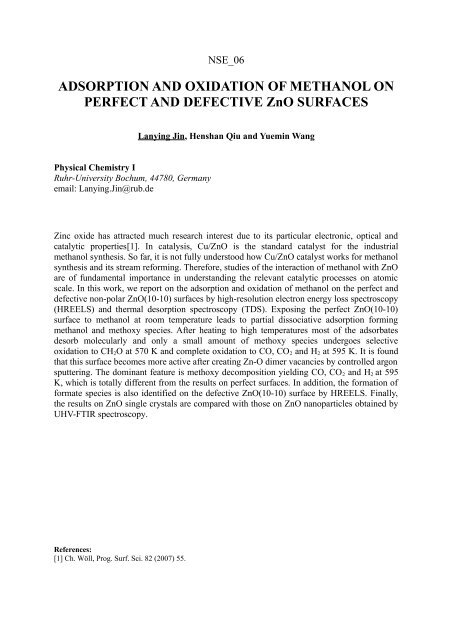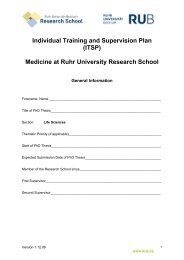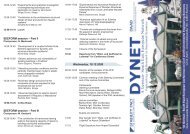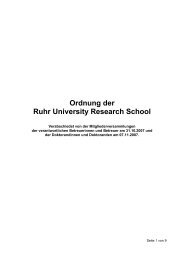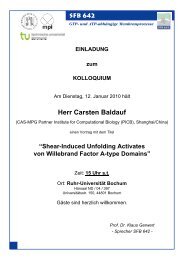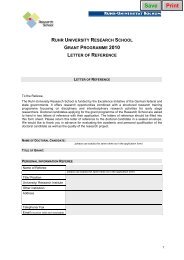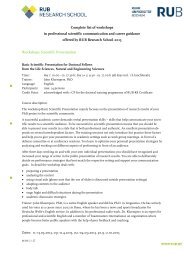Section Days abstract book 2010.indd - RUB Research School ...
Section Days abstract book 2010.indd - RUB Research School ...
Section Days abstract book 2010.indd - RUB Research School ...
You also want an ePaper? Increase the reach of your titles
YUMPU automatically turns print PDFs into web optimized ePapers that Google loves.
NSE_06<br />
ADSORPTION AND OXIDATION OF METHANOL ON<br />
PERFECT AND DEFECTIVE ZnO SURFACES<br />
Physical Chemistry I<br />
Ruhr-University Bochum, 44780, Germany<br />
email: Lanying.Jin@rub.de<br />
Lanying Jin, Henshan Qiu and Yuemin Wang<br />
Zinc oxide has attracted much research interest due to its particular electronic, optical and<br />
catalytic properties[1]. In catalysis, Cu/ZnO is the standard catalyst for the industrial<br />
methanol synthesis. So far, it is not fully understood how Cu/ZnO catalyst works for methanol<br />
synthesis and its stream reforming. Therefore, studies of the interaction of methanol with ZnO<br />
are of fundamental importance in understanding the relevant catalytic processes on atomic<br />
scale. In this work, we report on the adsorption and oxidation of methanol on the perfect and<br />
defective non-polar ZnO(10-10) surfaces by high-resolution electron energy loss spectroscopy<br />
(HREELS) and thermal desorption spectroscopy (TDS). Exposing the perfect ZnO(10-10)<br />
surface to methanol at room temperature leads to partial dissociative adsorption forming<br />
methanol and methoxy species. After heating to high temperatures most of the adsorbates<br />
desorb molecularly and only a small amount of methoxy species undergoes selective<br />
oxidation to CH2O at 570 K and complete oxidation to CO, CO2 and H2 at 595 K. It is found<br />
that this surface becomes more active after creating Zn-O dimer vacancies by controlled argon<br />
sputtering. The dominant feature is methoxy decomposition yielding CO, CO2 and H2 at 595<br />
K, which is totally different from the results on perfect surfaces. In addition, the formation of<br />
formate species is also identified on the defective ZnO(10-10) surface by HREELS. Finally,<br />
the results on ZnO single crystals are compared with those on ZnO nanoparticles obtained by<br />
UHV-FTIR spectroscopy.<br />
References:<br />
[1] Ch. Wöll, Prog. Surf. Sci. 82 (2007) 55.


